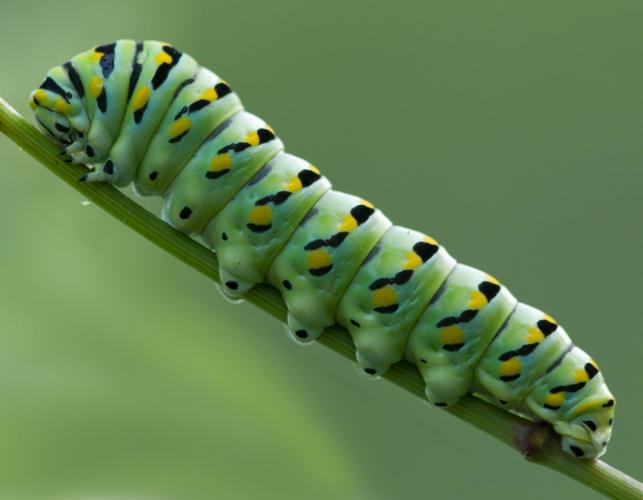Butterflies and moths are insects, but many of us think of them as something “more.” Perhaps it’s their beauty or the fact that they don’t bite or sting that makes people like them so much!
Butterflies and moths belong to an insect order called the Lepidoptera — the name means “scale-winged.” It refers to the tiny, overlapping scales that cover their wings like shingles. These scales seem like dust if they rub off on your fingers. The scales are often colorful but can also be muted browns and grays.
It is convenient to think of the insects in this order in three easy-to-recognize categories: butterflies, skippers, and moths.

Butterflies usually fly during the day. Their antennae tips are clublike, usually with swollen tips. They pupate as a chrysalis, usually attached to a plant or other object. They are rarely considered destructive. (Skippers are technically in the butterfly superfamily, but they are quite distinct.)
Skippers, like other butterflies, usually fly during the day. Their antennae are like those of other butterflies, but the tip is turned back like a hook. They typically have thickish, mothlike bodies, and many have drab colors. The larvae often hide in folded-over leaves by day. Skippers are technically a subdivision (family) of the butterflies.
Moths usually fly at night and are often attracted to lights. Their antennae are feathery or threadlike (usually not clublike), and they generally have plump, furry bodies. Many are drab, but several species have bright colors, eyespots, and other beautiful markings. They typically rest with wings folded flat or with wings folded like a gable over their backs. The larvae commonly spin cocoons or pupate in leaf litter or underground. The larvae of several species are considered pests.
- Those that drink nectar from flowers play a role in pollination.
- As eggs, larvae, pupae, and adults, they are sought out and eaten by a wide variety of predators ranging from bats and birds to wasps, spiders, shrews, and more.
- The larvae of several moth species are pests of agriculture, trees, grains, and more.
- Silk comes from the caterpillars of an Asian moth species.
- The beauty of many species has led to a global insect-collecting industry as well as an international boom in “butterfly houses,” special greenhouses designed as butterfly zoos.
- Humans have been inspired by many facets of lepidopteran life. We sing songs about “inchworms.” We see symbols in their attraction to light, their transformation from caterpillar to butterfly, and their seeming delight as they flutter among flowers on a sunny day.





























